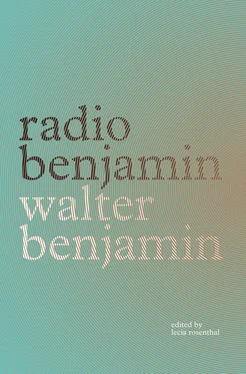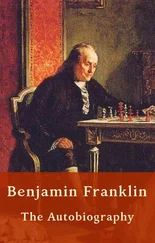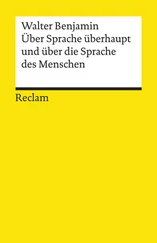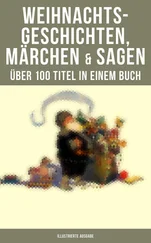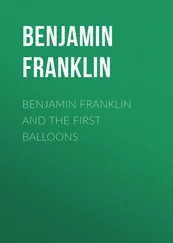5Adolf Glassbrenner, under the pseudonym Brennglas, wrote Berlin, wie es ist und trinkt [Berlin, As It Is — and Drinks] (Leipzig: Vetter and Rostosky, 1836), a series to which Hosemann contributed some of the illustrations.
6See Glassbrenner, Unterm Brennglas: Berliner politische Satire, Revolutionsgeist und menschliche Komödie [Under Glassbrenner’s Magnifying Glass: Berlin Political Satire, Revolutionary Spirit, and Human Comedy], ed. Franz Diederich (Berlin: Paul Singer, 1912), 75.
7Hosemann, letter dated November 15, 1848, in Brieger, Theodor Hosemann, 109–10.
8See Unsterblicher Volkswitz: Adolf Glaßbrenners Werk in Auswahl [Immortal Joke-Lore: Selected Works by Adolf Glassbrenner], eds. Klaus Gysi and Kurt Böttcher (Berlin: Das neue Berlin, 1954), vol. 1, 95ff. In this passage, Nante’s parts are written in Berlin dialect, whereas the court representative speaks in standard High German.
CHAPTER 11. A Visit to the Brass Works
I can imagine that upon hearing something like “A Visit to the Brass Works” on the radio, a listener might think: “Oh dear, another of those harebrained topics. You have to see something like that, you can’t describe it.” If that listener did not turn off his radio a few seconds ago, then I beg him to be good enough to give me just a few moments more, because it is precisely to him that I wish to speak.
One thing I would admit to him right away: one can really describe only the smallest part of all that meets the eye there. The writer or poet has yet to be born who is capable of describing a three-high rolling mill or a rolling shear or an extrusion press or a high performance cold rolling mill so that others can imagine them. An engineer could hardly do that. He simply draws the things. But what of the observer? I mean, for instance, what if one of you went into the Hirsch-Kupfer Brass Works near Eberswalde, and walked from one of those machines with the almost unpronounceable names to the next? What would you see? Very simple: just about as much as I can describe here with words. That is: next to nothing. And what would be the point of describing such a machine purely by its appearance? It is not made to be looked at, unless perhaps by someone who has first grasped its structure, its functional performance, its purpose and because of that knows what he should pay the most attention to as he observes it. One can only correctly comprehend something from the outside if one knows it on the inside; that is true for machines just as it is for living things.
But of course, you cannot get to know a machine from the inside, even if you are directly in front of it. Let’s assume you are standing in one of the giant halls: it would be fascinating to see how the mixture that is melted to brass is poured into the ovens, how the brass plate comes out of the ovens, how the fat, short metal plates go into the rolling mill and come out the other end all thin and long, how the short, round cylindrical rods get pushed automatically into the pressing mill and appear again as long, delicate, narrow tubes. You would see all of that. But you would not see how it was done, and what with the deafening racket of the machines at work, the rolling cranes, the dropping of loads, no one could explain it to you either.
Thus one can say that the closer one wants to get to what is going on in such an immense plant — should one witness such an operation some day — and the more one longs to understand a little bit of it, the further one has to distance oneself from it. And we should think of our few minutes here on the radio as if they were the gondola of a tethered balloon from which we can see into the whole operation down there in the Hirsch-Kupfer Brass Works, and can single out the points that must first be grasped in order to master the whole. Even then it will be difficult enough for us. For are there not many such crucial points? First we have the whole science, everything that physics and chemistry can tell us about brass. What is brass? What is its melting point? What is its hardness grade? How does it expand when it is warmed? What is its specific weight? And so on. Not one of these questions would be unimportant to the technical operations in a brass works. Or we could approach it from a completely different angle: What does such a plant have to produce in order to sell its products well? What is produced there? We’ll hear later, for example, that it’s none of the brass objects we normally handle. None of the things that were made there 200 years ago, when the Brass Works was founded by the Great Elector. Neither kettles nor ornamental coverings, neither candlesticks nor cutlery. All of these are made by specialized factories, and it is precisely to these specialized factories that the Hirsch-Kupfer Brass Works delivers its material. That means that it is here that the semi-finished products are made: metal plates and bands, rods, bars, wires of all sorts of different lengths, qualities, and sizes that are then further processed in other metalware factories or electro-technical businesses.
Or another point: How did such an enormous business, employing about 2,000 workers and 400 administrators, emerge? Naturally not from one day to the next. And this Hirsch-Kupfer Brass Works, the biggest of its kind in Europe, is also one of the oldest businesses. It dates back to the year 1697. It would be another story in itself to tell how it came about. But the only thing that matters to me now is that, as you contemplate the innumerable parts, conditions, and difficulties of such an enormous factory, you have your breath taken away exactly as if you had unexpectedly stepped into one of its roaring halls. So there are ever more such points that one has to keep in mind in order to even begin to understand the whole. For example, the power industry. Where does the mighty power, harnessed to the metal works day and night, come from? It comes from the Mark Brandenburg’s electric power plant, which lies only a kilometer away from the Brass Works. The electricity alone costs the Brass Works approximately 100,000 marks a month. Naturally, such huge customers pay the electric power plant at a special rate. There, too, every detail is given the sharpest consideration, and is subject to the most exact accounting. For such an operation must make sure to have as constant a power consumption as possible, day in, day out, even at any given hour, because the power plant will demand more payment the more irregular the use of power.
I could go on this way for quite a while, explaining one point after another, and still it would be only the most important and necessary ones. We haven’t said a word about the workers yet, about their training, or the complicated calculation of their wages. We also still haven’t said a word about the calculations, the responsibilities of the management, who not only have to organize the work procedure but also have to simultaneously keep an eye on the world markets, who have to see to it that they don’t buy at too high a price and that they always get enough orders to keep the plant running at full capacity, who have to ensure that the stock is never too great, because that costs interest, and never too small, so that the most urgent orders can be filled quickly.
If you now know how infinitely much there would be to say, to ask about all of this, and if you remember that we only have twenty minutes for our conversation, then you will see that there is no point running ahead in our seven-league boots, and that we should rather take our time at a few, individual stations. I suggest we start with the hall where the casting is done. What is brass? Brass is an alloy of copper and zinc. Some of you will surely know the difference between a compound and an alloy. Two elements must always form a chemical compound in a specific manner according to their atomic weights. You learn about it in school as Dalton’s Law. They can be alloyed physically by smelting them in very different proportions. The average proportion of copper and zinc in brass is sixty-three parts copper to thirty-seven zinc for the plates, and fifty-eight to forty-two for the rods. So there are different kinds of brass, and very different kinds are cast in the individual ovens, of which there are twenty-three in all. Which kind depends on the orders that have been received at the time. But it is not as if copper and zinc are simply weighed out in specific proportions and then poured into the ovens. If one were to proceed like that, a very poor, irregular brass would be the result. Zinc melts at about 600 °C and copper only at about 1100 °C. The solid bits of copper would swim around for a long time in the liquid zinc and would then, when they finally began to melt, dissolve only very irregularly in it. Therefore a balancing, as it were, mediating mass is added, namely old brass waste. It melts at about 900 °C, and thus makes the melting process constant. Not very long ago, such a casting could not be heavier than thirty kilograms. However, in the new ovens that the Brass Works put into operation in 1920, blocks of up to 600 kilograms can be produced. When the casting is done, the receptacles — they are called coquilles — that contain the blocks open, like a book, and one can see the brass inside. It is not, however, yellow and shiny but unsightly; there is a black, pitted skin from the casting process covering it, and that first needs to be scraped off. Then each block gets marked with its own special symbol, indicating what combination of metals the brass has and from which oven it came. Before it can be further processed, the casting is tested in the laboratory, not only for its purity but for its strength, ductility, hardness, elasticity, et cetera. For all these tests, there are special devices, among them a so-called tensile testing machine, which utilizes its 40,000 kilogram weight to test the plates or tubes. It is only in the laboratory that one can see how different the interiors of the individual kinds of brass look, because each of them presents a different image under the microscope depending on whether it was cast, or hard-rolled, or heated after its rolling.
Читать дальше
